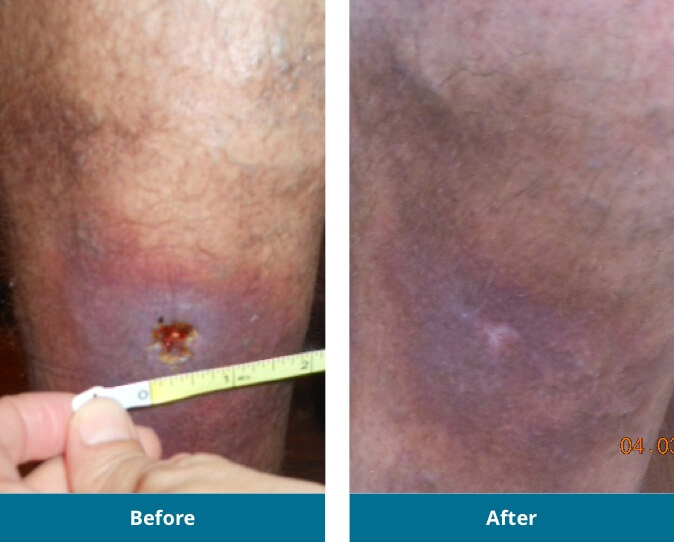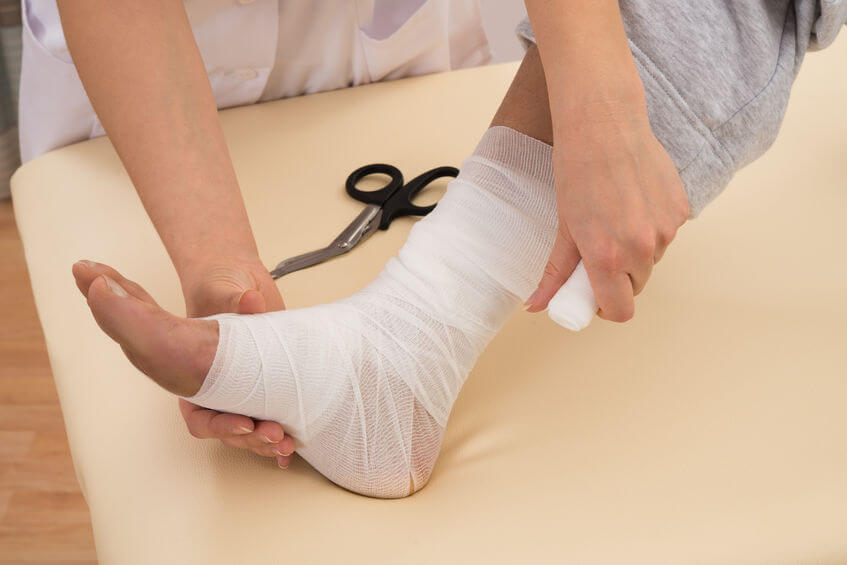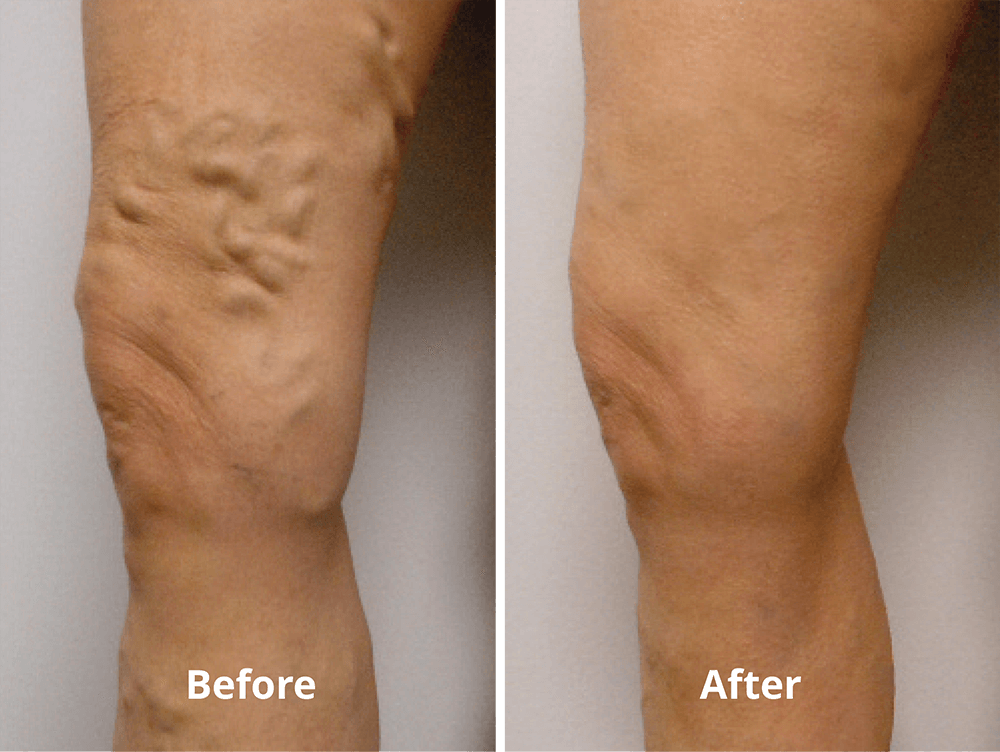Venous Ulcers
What Are Venous Ulcers?
Venous Ulcers are reoccurring or persistent wounds which are typically found in the lower legs. It’s not uncommon for venous ulcers to be treated in wound care centers for significant periods of time without much success. This is because the underlying problem is a poorly functioning vein. Varicose veins, over time, can result in increasing symptoms such as leg aching, pain, and swelling. This is a reflection of the increasing venous pressure from progressive valve failure inside the veins. Skin changes, such as dermatitis, may become evident over the medial aspect of the lower leg and ankle. Eventually, the skin can break down (ulcerate) with dramatic wounds that are challenging to heal.

What Are the Symptoms?
For most people, the ulcer is a final stage in a progressive problem which develops over years. Usually, the skin near or above the ankle becomes discolored, may lose elasticity, thicken, and become swollen and irritated. Leg swelling increases after prolonged time on your feet, at the end of the day, and can also be a result of high salt intake. Left untreated, the skin rash develops into an open wound which is persistent and responds poorly to wound care. Pictured: Wound Care with an Unna Boot.

How Are They Treated?
The most important step in treating a venous ulcer is a proper diagnosis and evaluation.
Diagnosis & Evaluation
By use of venous mapping with diagnostic Duplex ultrasound, areas of venous reflux can be identified and successfully treated with laser ablation and sclerotherapy. Used in combination with compression garments and wraps, these procedures can significantly reduce healing time and recurrences.
Treating an underlying venous problem can dramatically improve a venous ulcer.
Vein Disease Diagnosis
More
Venous Treatment Phases
More
Conservative Measures
More
Endovenous Laser Ablation
More
Ultrasound Guided Sclerotherapy
More


“I can now endure intense cardio and leg workouts, and it does feel like I’ve been given a new set of legs.”
